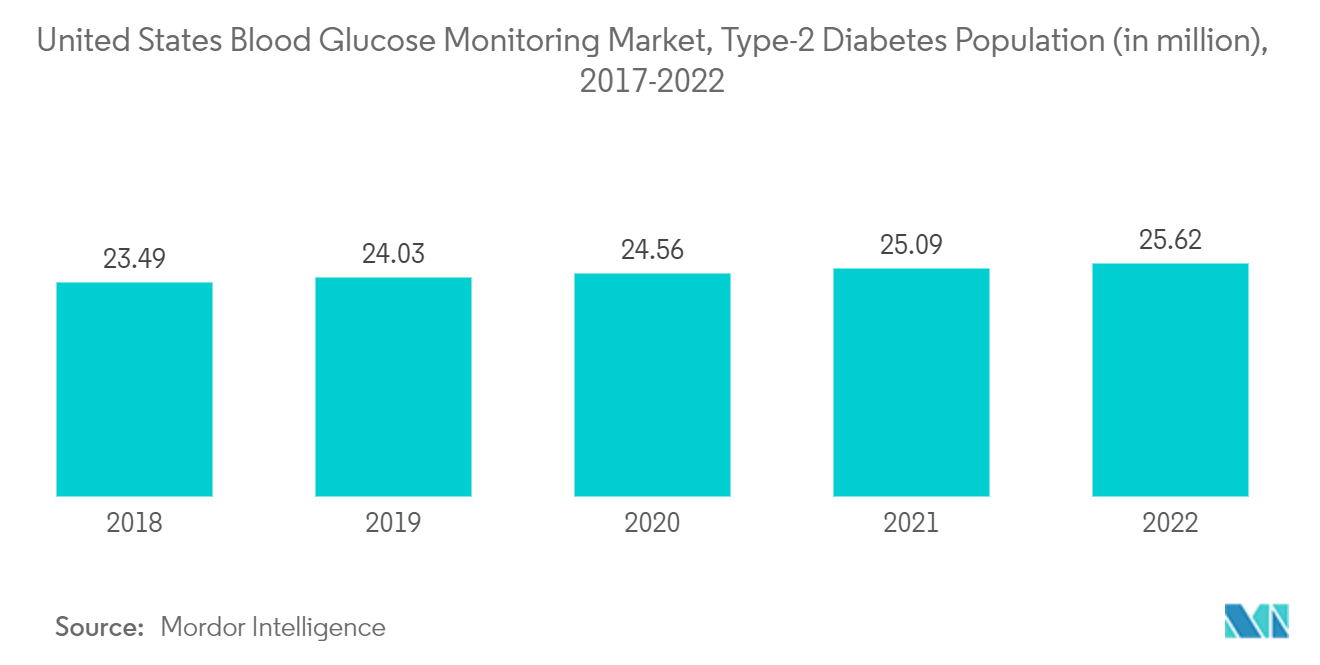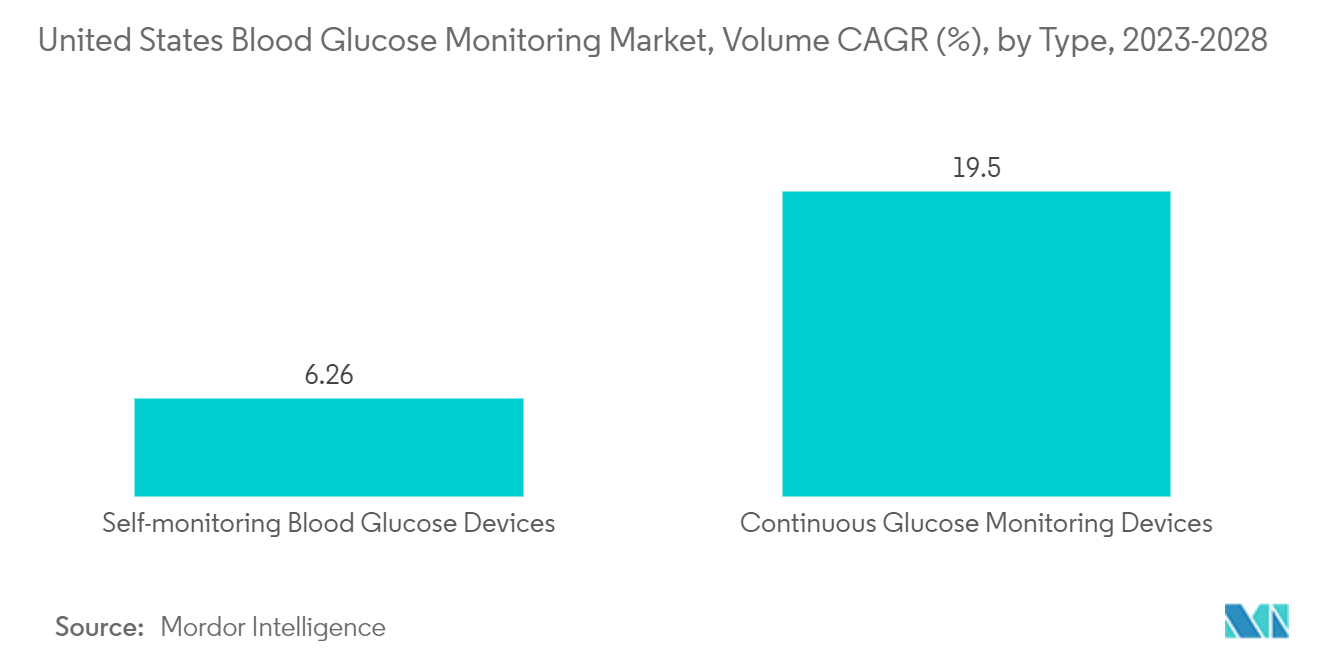Market Trends of United States Blood Glucose Monitoring Industry
This section covers the major market trends shaping the US Blood Glucose Monitoring Market according to our research experts:
Rising Diabetes Prevalence in the United States
In the United States, the number of people with diabetes has gone up a lot in the last 20 years. This is due to the rise in obesity and changes in lifestyle due to less physical activity, unhealthy eating habits, and other things.
The CDC National Diabetes Statistics Report 2022 estimated that more than 130 million adults are living with diabetes or prediabetes in the United States. Type 2 diabetes is more common, and diabetes is more consequential among communities of color, those who live in rural areas, and those with less education, lower incomes, and lower health literacy.
The ADA, the Endocrine Society, the American College of Physicians, the American Academy of Pediatrics, the Society of General Internal Medicine, and the National Academy of Medicine published statements and issued calls to action to address SDOH at the individual, organizational, and policy levels. In 2021, the ADA also published a scientific review describing the associations between SDOH and diabetes risk and outcomes, focusing on socioeconomic status, health literacy, the food environment, food insecurity, and neighborhood and physical environments, among other topics.
In the United States, there are several innovations in diabetes management platforms by startups, like Glooko, OneDrop, Verily, Vacate, Insulet, Noom, Bigfoot Biomedical, Virta Health, Diabeloop, and Orgenesis, which have launched in the market. The growing awareness among people regarding advanced diabetes devices is improving the adaptability of blood glucose monitoring devices. Leading manufacturers are focusing on technological innovations and developing advanced products to gain a substantial market share.
In May 2021, the World Health Assembly agreed on a resolution on strengthening the prevention and control of diabetes. It recommends action in areas including increasing access to insulin and promoting convergence and harmonization of regulatory requirements for insulin and other medicines and health products for the treatment of diabetes. In May 2022, the World Health Assembly endorsed five global diabetes coverage and treatment targets to be achieved by 2030.
Therefore, the studied market is anticipated to witness growth over the analysis period due to rising prevalence and the aforementioned factors.

Continuous Glucose Monitoring Segment is Expected to Witness Highest Growth Rate Over the Forecast Period
During the forecast period, the Continuous Glucose Monitoring segment is expected to register a CAGR of more than 19%.
Continuous glucose monitoring sensors use glucose oxidase to detect blood sugar levels. Glucose oxidase converts glucose to hydrogen peroxidase, which reacts with the platinum inside the sensor, producing an electrical signal to be communicated to the transmitter. Sensors are the most important part of continuous glucose monitoring devices. Technological advancements to improve the accuracy of the sensors are expected to drive segment growth during the forecast period.
CGMs help patients better control their glucose levels because they can see their glucose levels in real time without having to do a fingerstick. The use of a CGM can also eliminate the need for fingerstick blood glucose monitoring.The use of CGM by type-1 diabetic patients is very low as compared to type-2 diabetic patients. But the expenditure incurred by type-1 diabetic patients on these devices is nearly double that of type-2 diabetics. People with Type-2 diabetes don't use CGM as much as they could because they are expensive and it's not clear how well they work or if they even need to.
Furthermore, the current continuous glucose monitoring devices can either retrospectively display the trends in the levels of blood glucose by downloading the data or give a real-time picture of glucose levels through receiver displays. In March 2022, Dexcom released G7 first in the U.K. and expanded the launch across Europe throughout 2022. The CGM system was under review by the Food and Drug Administration for an eventual U.S. release. The Dexcom G7 overcame many technical barriers, such as a short warm-up time, more accurate glucose readings, and a smaller size. Eversense E3 CGMs and other technological advances have made it much easier for doctors to treat diabetes and for patients to keep track of their blood sugar levels.
According to the Center for Health Care Strategies, for Medicaid agencies that can cover and increase access to CGMs for their beneficiaries and for the larger healthcare system, there is strong evidence that supports the benefits of CGM use for all people who are insulin-treated with an insulin pump or multiple daily insulin injections, and emerging evidence is showing the benefit of CGMs in patients on basal insulin.
The aforementioned factors are set to boost market growth.

